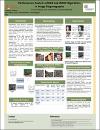Performance Analysis of DCT and DWT Algorithms in Image Steganography
Abstract
Frequency domain techniques such as Discrete Cosine Transform (DCT) and Discrete Wavelet Transform (DWT) ensures high accuracy when compared with the spatial domain techniques. Therefore, these image steganographic methods were evaluated using public datasets to compare the performance of DCT and DWT. After performing different tests using the datasets in each of the algorithms, a comparative analysis is made in terms of the Peak Signal-to-Noise Ratio (PSNR) metrics. The results indicate that the stego image generated after embedding the secret acquires high imperceptibility and robustness. The performance of the DWT algorithm is higher as compared to the DCT algorithm and the resultant images produced are very less prone to noise attacks. In DCT and DWT algorithms, the cover image will be split based on 8×8 pixel blocks and 2D DCT is applied on each pixel. The secret will be embedded inside DCT coefficient and inverse 2D DCT is applied to recover the secret. Therefore, these image steganographic techniques can be adopted to transfer the confidential messages in different sectors. In the future, other data hiding methods using deep learning could be implemented to increase the robustness and imperceptibility of covert messages.
DOI/handle
http://hdl.handle.net/10576/24531Collections
- Biomedical Sciences [796 items ]
- Theme 3: Information and Communication Technologies [16 items ]


